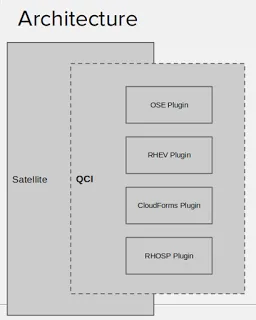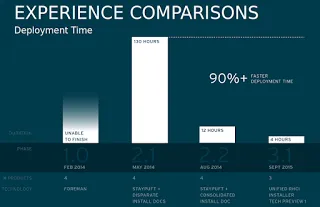 Figure 1. The inner workings of QuickStart Cloud Installer
Figure 1. The inner workings of QuickStart Cloud Installer
What if I told you that you can have your OpenStack Cloud environment setup before you have to stop for lunch?
Would you be surprised?
Could you do that today?
In most cases I am betting your answer would be not possible, not even on your best day. Not to worry, a solution is here and it's called the QuickStart Cloud Installer (QCI).
Let's take a look at the background of where this Cloud tool came from, how it evolved and where it is headed.
Born from need
As products like Red Hat Cloud Suite emerge onto the technology scene, it exemplifies the need for companies to be able to support infrastructure and application development use cases such as the following:
- Optimize IT
- Accelerate Service Delivery
- Modernize Development and Operations
- Scalable Infrastructure
The problem is how to streamline the setup of such intricate and complex solutions?
 Figure 2. Getting the installation of complex infrastructure solutions down from a month, to days, to just hours based on testing by Red Hat.
Figure 2. Getting the installation of complex infrastructure solutions down from a month, to days, to just hours based on testing by Red Hat.
It started with researching in 2013 how the product Red Hat Cloud Infrastructure (RHCI) was being deployed by Red Hat customers. That information was used to start an effort creating several simple, reproducible installation guides that could cut down the time needed to install the following products.
The final product installation documentation brought the deployment time for this infrastructure solution down to just several days, instead of a month. Figure 2 shows the progress made between the efforts of installing RHCI.
The next evolution included Satellite and OpenShift offerings that you now find in the Red Hat Cloud Suite solution. This brought more complexity into the installation process and a push was made to go beyond just documentation. An installation effort commenced that had to bring together all the products, deal with their configurations and manage it all to a full deployment in a faster time frame than several days.
How it works
The QCI progressed and expanded by functioning as an extension (plugin) of Satellite with intentional roadmap alignment. It uses specific product plugins that interface with their individual APIs so that they can be used for both individual product installations and complete solution base installs.
Figure 1 shows you the architectural layout of QCI as it relates to Satellite. See the online documentation for the versions supported by QCI at the time of this writing, we expect to update the documentation on a regular basis as products are released that QCI supports.
The installer, when first started, spins up the Fusor Installer. This is a plugin to Foreman and is used to perform the initial setup such as networking and provisioning within Satellite to be used later in the deployment.
Some of the deployment steps depend on the path you have chosen when specifying the products you wish to install:
- if a RHV with CloudForms deployment is chosen, the QCI calls Puppet modules for configuring and setting up the RHV environment. It installs RHV-M and runs Python scripts which will set the RHV Datacenter up.
- CloudForms management engine is deployed as a Satellite resource and as such can be launched on top of RHV.
- Most of the OpenShift product deployment uses Ansible to facilitate the installation and setup of the environment.
- OpenStack uses what is known as the TripleO installation. This means OpenStack installed on OpenStack (hence the three O's). It uses an all-in-one ISO image containing OpenStack which then deploys a customized version configured through QCI user interface.
The two deployment patterns supported by QCI are:
- Red Hat Cloud Infrastructure
- Satellite, RHV, OpenStack and CloudForms
- Red Hat Cloud Suite
- Satellite, RHV, OpenStack, CloudForms and OpenShift product
Now here is the unbelievable part we suggested in the title, that both deployment patterns can be installed in under four hours.
 Figure 3. The timeline from pushing the deploy button to completion of your OpenStack deployment.
Figure 3. The timeline from pushing the deploy button to completion of your OpenStack deployment.
Yes, you can arrive in the morning to work and have your OpenStack Cloud infrastructure setup by the time you have to break for lunch!
Figure 3 shows you a condensed timeline of our testing of the RHCI installation as an example, but the same is possible with Red Hat Cloud Suite.
The future is bright
We can't think of anything brighter for you than a future where you can reduce deployment times for your complex Cloud infrastructure, but there are more positive points to take note of when you leverage QCI:
- Simple fully integrated deployments of RHCI and Red Hat Cloud Suite requiring only minimal documentation.
- Easy to use, single graphical web-based user interface for deploying all products.
- Leverages existing Red Hat Storage (Ceph and Gluster) deployments for Red Hat Virtualization, Red Hat OpenStack, and OpenShift product installations.
- Integrated with Red Hat’s Customer Portal for automated subscription management.
- Avoid the need for costly consultants when deploying proof-of-concept environments.
(This article written together with Red Hat Software Engineer Nenad Peric)
See more by Eric D. Schabell, contact him on Twitter for comments or visit his home site.
关于作者
产品
工具
试用购买与出售
沟通
关于红帽
我们是世界领先的企业开源解决方案供应商,提供包括 Linux、云、容器和 Kubernetes。我们致力于提供经过安全强化的解决方案,从核心数据中心到网络边缘,让企业能够更轻松地跨平台和环境运营。

